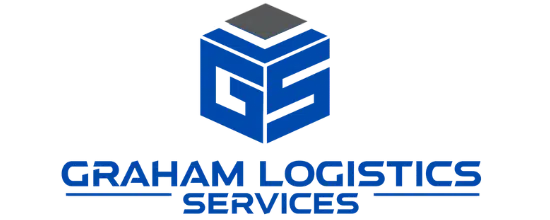Demand planning is a critical aspect of supply chain management that involves predicting future demand for products or services. It allows businesses to prepare for future demand and ensure that they have the necessary inventory levels to meet customer needs. Effective demand planning helps businesses optimize their operations, reduce lead time, and improve customer satisfaction.
The importance of demand planning cannot be overstated. By accurately forecasting demand, businesses can optimize their inventory levels, improve their supply chain visibility, and reduce costs associated with excess inventory. In addition, effective demand planning helps businesses make informed decisions about production scheduling, asset management, and product development.
To achieve effective demand planning, businesses need to employ various techniques and methods. These include historical data analysis, forecasting methods, demand sensing, external macro forecasting, linear regression, trend projection, and predictive analytics. By using a combination of these techniques, businesses can accurately predict future demand and optimize their operations accordingly.
In the following sections, we will explore the best practices and key steps involved in effective demand planning, the role of technology in demand planning, and the future of demand planning. By following these guidelines, businesses can improve their forecasting accuracy, reduce costs, and better meet the demands of their customers.
Understanding Demand Planning and Forecasting
Demand planning and forecasting are two critical components of supply chain management. Demand planning involves using historical data, market research, and other relevant information to predict future demand for products or services. Forecasting, on the other hand, involves using statistical methods and other techniques to estimate future demand.
Demand planning is an essential part of the supply chain process because it allows businesses to optimize their inventory levels, reduce lead time, and balance demands with available resources. By accurately forecasting demand, businesses can ensure that they have the right products in stock to meet customer demand, reducing the risk of stockouts and lost sales.
In addition to improving customer satisfaction, effective demand planning can also lead to significant cost savings for businesses. By optimizing inventory levels and reducing lead time, businesses can minimize the amount of money tied up in inventory and reduce the cost of carrying excess stock.
Overall, demand planning and forecasting play a critical role in helping businesses meet customer demand while minimizing costs and improving supply chain efficiency. By using historical data, real-time data, and market insights, demand managers can accurately predict demand signals and improve forecasting methods to drive business success.
Historical Data Methods for Effective Demand Planning
Historical data is a crucial component of demand planning, as it provides valuable insights into past trends and patterns. There are several types of historical data that can be used in demand planning, including sales data, production data, and inventory data. This data is typically collected through various sources, such as point-of-sale systems, supply chain management software, and customer relationship management systems.
The advantage of using historical data is that it provides a foundation for accurate forecasting and demand planning. By analyzing past sales and inventory levels, businesses can identify trends and patterns that can be used to develop effective demand plans. This information can also be used to optimize inventory levels, reduce lead times, and balance demands and supplies.
However, there are limitations to using historical data in demand planning. Historical data may not always be a reliable predictor of future demand, especially if there are significant changes in market conditions or consumer behavior. Additionally, historical data may not capture external macro-economic factors that can impact demand, such as changes in the economy, trade policies, or weather conditions.
Despite these limitations, historical data remains a critical component of effective demand planning. By combining historical data with other forecasting techniques, such as econometric methods or trend projection, businesses can accurately forecast demand and optimize their supply chain processes to meet customer demand.
Forecasting Methods for Improved Demand Planning
Forecasting methods are essential to effective demand planning, and there are several methods available to businesses. Some popular forecasting methods include time series analysis, econometric methods, and trend projection. Each forecasting method has its advantages and disadvantages, making it crucial to choose the right method for a business. Time series analysis, for example, is useful for forecasting demand for products with stable trends, while trend projection is suitable for businesses that are expanding or contracting. Econometric methods, on the other hand, use statistical models to forecast demand, making them suitable for businesses with complex demand patterns. Choosing the right forecasting method for a business is essential to ensure that the business can accurately predict demand and optimize inventory levels. By doing so, businesses can reduce lead time, balance demands and supplies, and ultimately meet the demand of their customers in the most cost-effective and efficient way possible.
The Role of Technology in Effective Demand Planning
In today’s digital age, technology has become an integral part of demand planning. There are several technology tools available that can help businesses optimize their demand planning process. For instance, demand sensing technology can provide real-time data on consumer demand, while predictive analytics can help businesses predict future demand.
The benefits of using technology in demand planning are significant. Technology can help businesses accurately forecast demand, optimize inventory levels, and reduce lead times. Furthermore, technology can improve supply chain visibility and reduce operational costs.
However, businesses may face challenges in adopting technology for demand planning. For example, integrating new technology into existing systems can be complex and time-consuming. Additionally, businesses may need to invest in training and education to ensure their employees are equipped with the necessary skills to use technology tools effectively. Despite these challenges, the benefits of using technology in demand planning make it a worthwhile investment for businesses looking to optimize their supply chain operations.
Best Practices for Effective Demand Planning
Demand planning is an essential process that helps businesses anticipate future demand for their products or services, and plan accordingly. To ensure effective demand planning, businesses need to adopt best practices that align with their organizational goals and objectives. Below are some of the best practices that businesses can use to optimize their demand planning process.
- Set Clear Objectives: To optimize demand planning, businesses should start by defining clear objectives for the process. This involves identifying the key performance indicators (KPIs) that will be used to measure the success of the demand planning process.
- Use Accurate Data: To make informed decisions, businesses need to use accurate data for demand planning. This involves collecting data from various sources such as historical sales data, customer feedback, market trends, and macroeconomic indicators.
- Collaborate Across Departments: Demand planning involves various departments such as sales, marketing, and supply chain. To optimize the process, businesses need to foster collaboration and communication between these departments.
- Adopt Technology: Technology can help businesses streamline their demand planning process, and improve accuracy and efficiency. Some of the technology tools that businesses can use for demand planning include forecasting software, supply chain visibility tools, and data analytics software.
- Continuous Improvement: Finally, businesses need to continuously monitor and improve their demand planning process. This involves regularly reviewing and updating demand plans, and using feedback to refine the process.
By adopting these best practices, businesses can optimize their demand planning process, improve forecast accuracy, reduce costs, and enhance customer satisfaction.
Effective Demand Planning Strategies for Businesses
As the supply chain landscape becomes increasingly complex, demand planning has emerged as a critical process for businesses to effectively manage their operations. Demand planning is the process of forecasting consumer demand for products and services, allowing businesses to optimize their supply chain management process and ensure they have the right products and resources available to meet demand. In this section, we will explore some of the best practices and strategies businesses can use to improve their demand planning process.
- Understand your demand forecast and the different forecasting types
One of the key steps in demand planning is to develop a demand forecast that predicts the future demand for a product or service. This demand forecast can be developed using various forecasting types such as statistical forecasting, the Delphi method, or a combination of both. Statistical forecasting involves analyzing historical data points and identifying trends, while the Delphi method is a collaborative approach that involves gathering input from different stakeholders to arrive at a consensus.
- Take a portfolio management approach
Product portfolio management involves categorizing products based on their demand and profitability, enabling businesses to prioritize products that generate the most revenue. By focusing on the most profitable products, businesses can optimize their inventory planning, production planning, and capacity plans, ensuring they have the right resources available to meet demand.
- Leverage technology solutions
Businesses can leverage technology solutions such as demand planning software to automate their demand planning process. These solutions can streamline the collection and analysis of past sales data, trade promotions, and other data points, enabling businesses to make informed decisions about supply planning and production planning. The operational planning SOP can be integrated with demand planning software to ensure optimal supply chain planning.
- Collaborate with demand planners and business leaders
Demand planners can work with business leaders to develop a sales plan that is aligned with the business goals and objectives. This collaboration can ensure that the demand forecast is accurate, enabling businesses to optimize their inventory planning and production planning to meet demand.
- Develop a sales and operations planning (S&OP) process
The S&OP process involves aligning the sales plan with the operations plan to ensure that the business has the right supplies and demand to meet customer needs. This process can help businesses balance supply and demand, optimize their inventory planning and production planning, and improve their overall operational efficiency.
- Consider trade promotions in your demand forecast
Trade promotions can impact demand for products and services, and businesses need to take these promotions into account when developing their demand forecast. By factoring in trade promotions, businesses can develop a more accurate demand forecast and optimize their supply chain management process.
- Develop contingency plans
Contingency plans involve developing backup plans in the event of unforeseen events that impact the supply chain. For instance, businesses need to consider the impact of natural disasters, political unrest, or global pandemics on their supply chain. By developing contingency plans, businesses can ensure they are prepared to meet demand in the face of unexpected events.
In conclusion, demand planning is a critical process for businesses to optimize their supply chain management process and ensure they have the right products and resources available to meet demand. By taking a portfolio management approach, leveraging technology solutions, collaborating with demand planners and business leaders, developing a sales and operations planning process, considering trade promotions in the demand forecast, and developing contingency plans, businesses can improve their demand planning process and improve their overall operational efficiency.
Conclusion
Effective demand planning is a critical component of successful supply chain management. It enables businesses to optimize their operations by accurately predicting future demand and adjusting their strategies accordingly. In this article, we have discussed the various techniques and methods used for effective demand planning, including historical data analysis, forecasting, and technology tools. We have also outlined best practices for businesses to optimize their demand planning process, such as continuous improvement and collaboration between departments. By prioritizing demand planning, businesses can reduce costs, increase efficiency, and improve customer satisfaction. It is important for businesses to regularly assess their demand planning strategies and adjust them as necessary to remain competitive in their industry.


